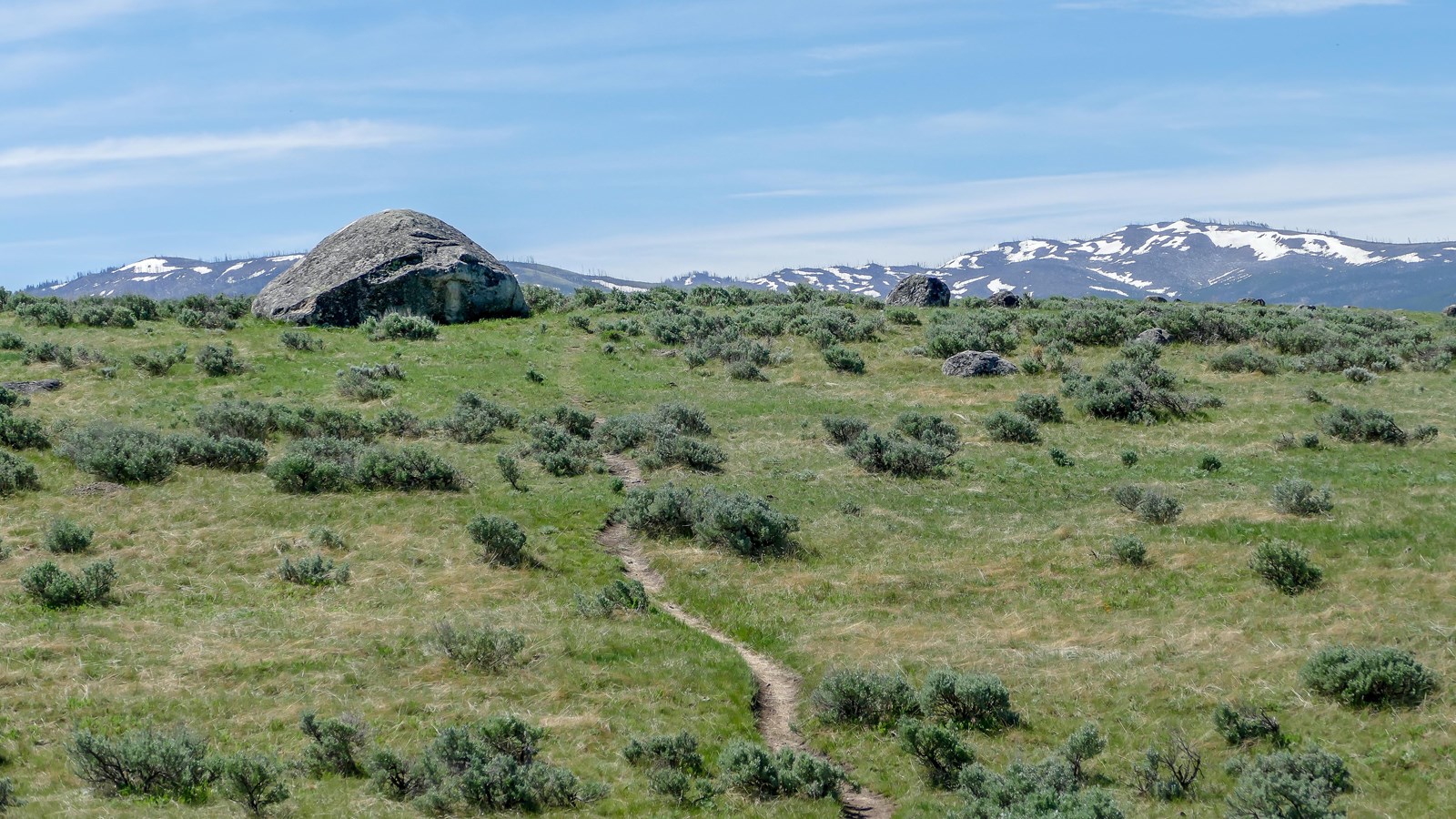Last updated: November 27, 2024
Place
Lamar Valley - Evidence of Glaciers

NPS / Diane Renkin
Historical/Interpretive Information/Exhibits
Glaciers result when, for a period of years, more snow falls in an area than melts.
Once the snow reaches a certain depth, it turns into ice and begins to move under the force of gravity or the pressure of its own weight.
During this movement, rocks are picked up and carried in the ice, and these rocks grind Earth’s surface.
Ice and water erode and transport earth materials as well as rocks and sediments.
Glaciers also deposit materials. Large U-shaped valleys, ridges of debris (moraines), and out-of place boulders (erratics) are evidence of a glacier’s passing.
A glacial deposit near Tower Fall in Yellowstone dates back 1.3 million years.
The Earliest People in Yellowstone
People were probably not here when the entire area was covered by ice caps and glaciers. The last period of ice coverage ended 13,000-14,000 years ago. Sometime after that and before 11,000 years ago, humans arrived in Yellowstone.
Animals are Dangerous
- Do not approach or feed any animal.
- Bison and elk have injured people.
- Stay 100 yards (91 m) from bears and wolves.
- Stay 25 yards (23 m) from all other animals.
You are responsible for your safety.
Think Safety, Act Safely. Yellowstone is a Dangerous Place.
